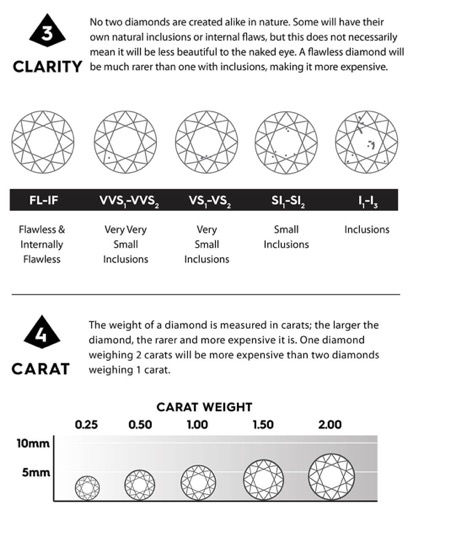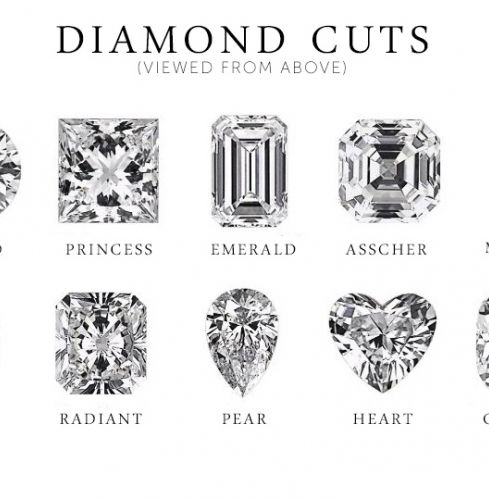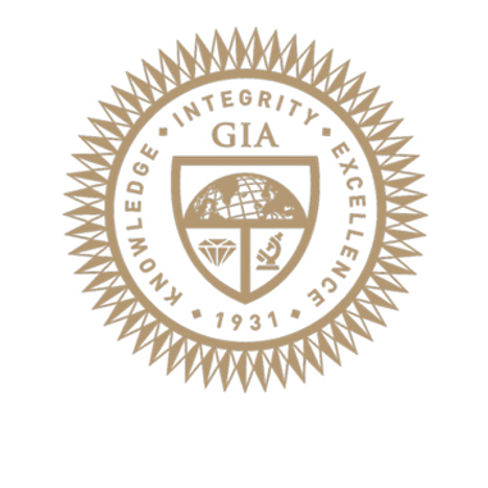DIAMOND EDUCATION
Diamonds are prized for their exceptional beauty and rarity, characterized by four attributes: cut, clarity, color, and certification. The cut how well a diamond reflects light, influencing its sparkle and overall appearance. Clarity refers to the presence of or external flaws, with higher clarity stones being more valuable. Color ranges from colorless to shades yellow or brown, with colorless diamonds being the most sought after. Certification from reputable gemological laboratories ensures that the diamond's quality is accurately assessed and verified.
DIAMOND CUT
A diamond cut refers to the specific angles and proportions of a diamond's facets, which greatly influence its overall appearance and brilliance. The quality of the cut affects how well the diamond reflects and refracts light, contributing to its sparkle. A well-cut diamond will exhibit exceptional fire and scintillation, making it desirable. Different cut styles, such as round princess, and emerald, each offer unique characteristics and appeal to various tastes.


DIAMOND COLOR
Diamonds come in a stunning array of colors, each with its unique charm. The most sought-after is the classic white or colorless diamond, which reflects light beautifully, creating a brilliant sparkle. Fancy colored diamonds, such as blue, pink, yellow, and green, showcase a vibrant richness, with their hues resulting from various natural processes. color tells a story and adds a personal touch to any piece of jewelry.
DIAMOND CLARITY & CARAT
Diamond clarity refers to the presence of internal or external imperfections, commonly known as inclusions and blemishes. These features can affect a diamond's overall appearance and value; the fewer imperfections a diamond has, the higher its clarity grade. Carat size, on the other hand, measures a diamond's weight, with one carat equivalent to 200 milligrams. Larger diamonds are rarer and tend to be more valuable, but the overall quality, including cut, color, and clarity, also plays a crucial role in determining a diamond's worth.


DIAMOND CUTS
Sure! Here’s a brief description of different types of diamond cuts:
1. Round Cut: The most popular diamond cut, known for its brilliance and sparkle. It features 58 facets that maximize light reflection.
2. Princess Cut: A modern cut that combines a square shape with brilliant facets, offering a contemporary look and excellent sparkle.
3. Emerald Cut: Characterized by its rectangular shape and step facets, this cut highlights clarity and color, giving diamonds an elegant and sophisticated appearance.
4. Asscher Cut: Similar to the emerald cut but square, it features a distinctive "hall of mirrors" effect, showcasing the diamond’s clarity and depth. These cuts vary in style and brilliance, allowing for personal preference in selecting the perfect diamond.
GEMOLOGICAL INSTITUTE OF AMERICA (GIA)
The Gemological Institute of America (GIA) is a leading authority in gemology, dedicated to the public trust in gems and jewelry. Founded in 1931, G is renowned for its rigorous scientific research, education programs, and the development of grading standards that have become the industry benchmark. With a commitment to integrity and excellence, GIA empowers gem and jewelry professionals with the knowledge and skills needed to succeed in a competitive market. Explore the world of gems and discover the beauty and value that GIA helps to define.


INTERNATIONAL GEMOLOGICAL INSTITUTE (IGI)
The International Gemological Institute (IGI) is a globally recognized authority in gemology and evaluation. Established to promote and uphold the highest standards in the industry, IGI provides comprehensive grading and certification services for diamonds, colored stones, and pearls. With a commitment to education and transparency, IGI empowers consumers and professionals by delivering trusted and reliable information. Whether you're a buyer seller, or enthusiast, IGI is dedicated to ensuring the integrity and quality of your precious gems.



